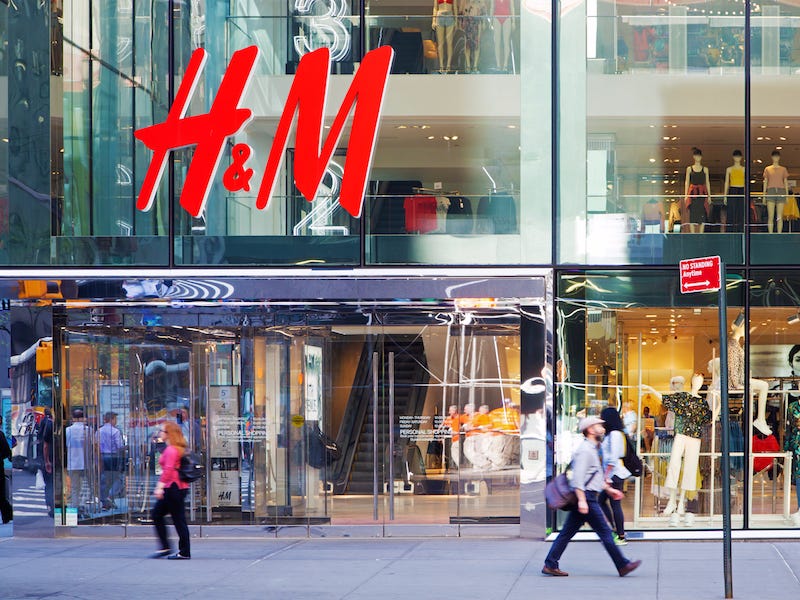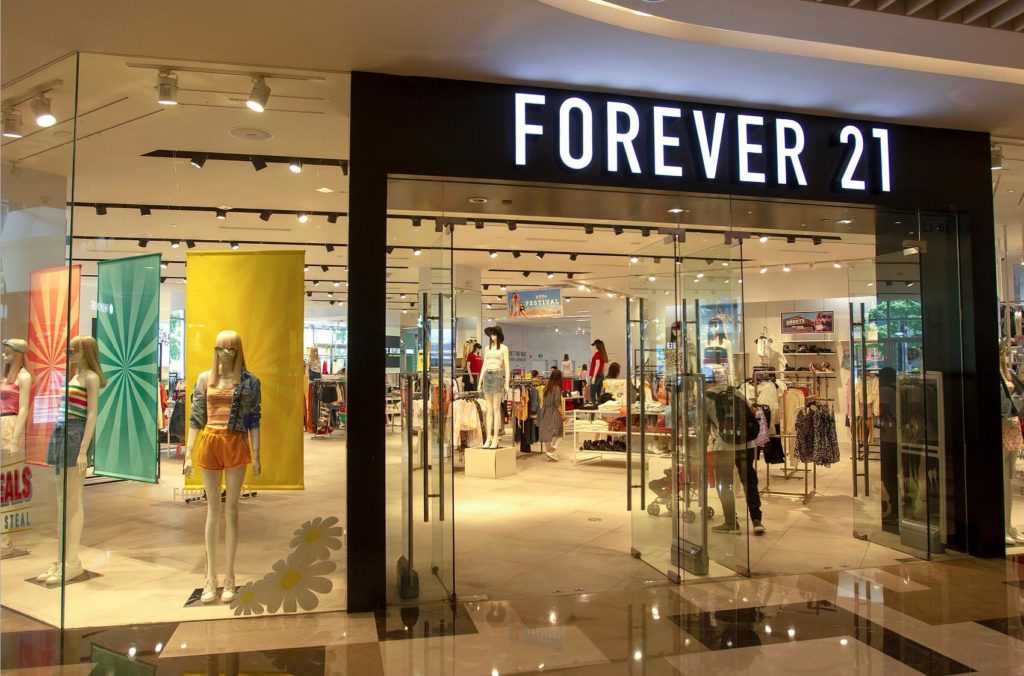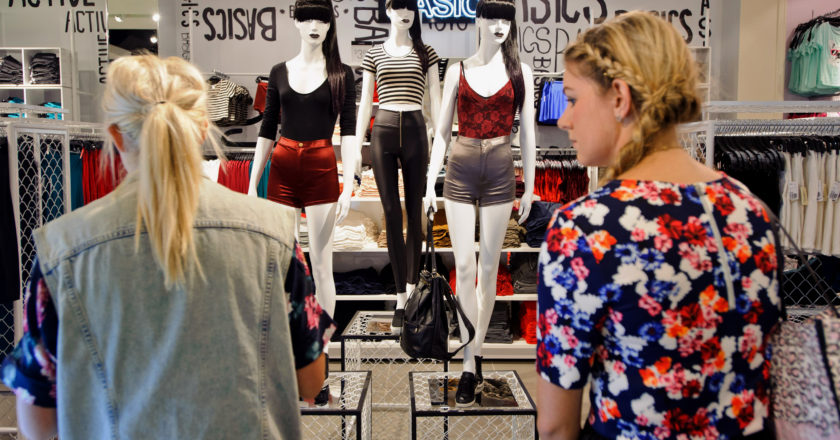If you’ve ever taken a trip to H&M before the summer begins and bought seven shirts from that sale rack, visited Forever 21 to buy some neon shorts for a themed party, or gotten a cheap pair of flare pants because you figured they would be out of style in a month…congratulations! You’re one of the 99% of people who have succumbed to the temptation of cheap clothes, often referred to as fast fashion. While convenient and exciting, this consumer tendency sacrifices quality, the environment, and the welfare of others.
Fast fashion is one of the most polluting industries in the world, producing over eight percent of our greenhouse gases and is second only to the oil industry. The amount of plastic ending up in our water (and our food) simply from washing cheap garments is not even included in this calculation. Furthermore, the average human discards about 81 pounds of clothing each year! The gimmick of fast fashion allows people to purchase and wear trendy clothes almost instantly without breaking the bank. But the resulting high demands and constant introduction of new trends, causes companies such as Forever 21, Urban Outfitters, and even pricier brands like Anthropologie, to produce items faster and cheaper. Naturally, some corners are cut in the production process.

Often, these companies use cheap and toxic dyes that pollute water. As machines are becoming more powerful, they are also releasing increasingly dangerous amounts of gas into the air. Workers are getting paid less and working more, but are forced to keep their jobs out of financial necessity. In addition, 85% of these workers are women. Even the budget designated to ensure safety in the workplace has been drastically cut. This has resulted in fast fashion buildings in low and middle income countries frequently catching on fire or collapsing, killing and injuring many.
Remember learning about the Triangle Shirtwaist Fire in the 1900s? That was certainly not the last time the world needed a reality check about the safety of these large industries. In 2013, a fire in Bangladesh killed over one thousand people and injured over 2,500. However, this was not an isolated incident.
.
It’s time to address the elephant in the room: the quality of fast fashion is simply subpar. Although we understand that those $4.99 shirts won’t last more than a few wears and that buying a $20 long lasting shirt will be a more sustainable investment, humans are not accustomed to thinking about the long-term results. We buy our cell phones with the expectation that we will need to replace them in a few years, and we take every test with the assumption that we will forget the information shortly afterwards. One of the easiest ways to make a change is to treat the items in your closet like a long-term investment
Consider the staples of your wardrobe: a pair of jeans (Levi’s is currently working to reduce the water used to make a single pair), basic shirts, and sweaters. Try to invest in sustainable basic pieces that can be paired with almost everything. Furthermore, consider purchasing clothes from ethical brands, such as Able, Pact, Alternative Apparel, Everlane, or Pansy. This is a relatively simple transition…but what about all of the other, wear-once-a-month articles of clothing that allow you to really express your style?

Many people strive to wear all of the latest style trends. They want to be the Paris Hilton of the community, never getting photographed in the same outfit twice. So what are some alternatives for your monthly trip to the mall? The easy answer is rental services – think Rent the Runway, Express Style Trial, or LeTote, which allow you to select items that you like, wear once or twice (or more!), return the items, and get new items, all for a flat monthly fee. If you enjoy wearing clothes from expensive brands, Style Lend allows you to rent designer items out of other people’s closets for a week!
Another option is shopping at thrift stores — also one of the best places you can send your old clothes. Although these stores are an easy way to recycle items, if you are able to afford the prices of ethically made brands, it’s better to buy directly from them. If more financially stable people buy from thrift stores in an attempt to be more eco-friendly, then those who are less wealthy are forced to buy from the cheaper brands, putting ethical brands out of business and helping the fast fashion brands even more!
If you still need convincing, there’s several ethical brands that are beginning to cater to younger people – Reformation (an Urban Outfitters dupe), Dynamite (which is basically a cooler H&M), and Mata Traders (who carry clothes very similar to ModCloth), to name a few!
Although it might take more effort to find sustainable clothes that you really like, time restraints are a small barrier to overcome in this situation. The environmental, social, and oftentimes financial impacts are high payoffs. It’s up to you to research, learn about your favorite brands, and begin to change your spending habits!
https://www.vox.com/2019/9/12/20860620/fast-fashion-zara-hm-forever-21-boohoo-environment-cost
https://www.saturdayeveningpost.com/2018/01/ready-waste-americas-clothing-crisis/
![]()

